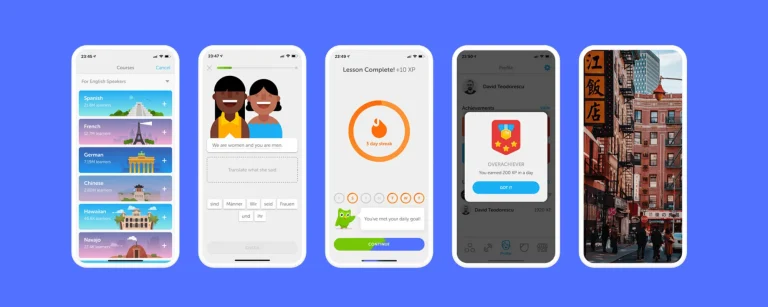In today’s digital world, where every brand is fighting for eyeballs, it becomes important to provide some memorable experiential cohesion, and here lies the secret behind such seamless experiences—it truly lies at the confluence of convergence of UI/UX design and brand identity.
These elements combine to deliver a coherent and apparent experience at every point of contact that the user has with your brand, and through this experience, one will feel and voice the fundamental brand values. The article aims to explain how the convergence of UI/UX design and brand identity works as a team in creating experiences that have a single unified, powerful impact.
UI/UX Design And Brand Identity
It starts by creating an understanding of what each comprises and then explains how they converge into powerful brand experiences.
- UI Design: This stands for the visual part of the product or website: layout, type, color, buttons, and other interactive elements. It involves designing what is actually placed on the screen and with which the user interacts.
- UX Design: UX design means the overall experience of a user on a product or service. It involves usability, accessibility, and the emotional response a user develops while using the product. The point of UX design is to make interactions intuitive, efficient, and full of enjoyment.
- Brand Identity: Brand identity involves creating and styling the brand’s visible elements—logos, colors, typography, and design style—into compelling expressions that denote or suggest what a brand wants to show about itself in people’s thinking.

The Need For Cohesive Experiences
- Consistency Builds Trust: Users trust a brand when they get used to design elements and essential interactions with the brand. Such consistency remarks to the user that they are on the right page.
- Brand Recognition: A strong and coherent brand identity builds brand recognition. If your UI/UX design conveys the identity of your brand, then such consistency can easily be recognized by users on any different platform and device.
- Emotional Connection: A well-aligned brand identity and UI/UX can evoke emotions that call out to users. Such emotional connection could change casual users into loyal customers or advocates for your brand.
- Differentiation: In a crowd, a sole and alike brand experience can differentiate your brand from the rest of the competition. This helps in creating a different identity that always stays distinct in the minds of the users.
Brand Identity Integration Into UI/UX Design
This is necessary to bring out brand identity in all aspects of UI/UX design work, providing an integrated, seamless experience. How to go about it:
Visual Consistency
- Colors: They are an important part of brand identity, with the need to use them consistently in the different UI elements. Choose a palette that communicates your brand’s personality and stick to it across the website, the app, or any other digital platform.
- Typography: Like colour, needs to be representative of your brand’s voice. Formal, playful, or modern—typefaces need to gravitate towards these characteristics of the brand. Plus, the consistency in typography across all interface elements will contribute to brand identity.
- Imagery and Icons: The style of the imagery, illustration, and icons needs to be typified under the brand’s visual language. It could be minimal or give much detail to the structure—the illustrative elements must communicate the brand’s essence.
Tone Of Voice
This tone of voice, in your content and microcopy alike—think button labels, error messages—shall be that of your brand’s personality. Be it friendly, authoritative, or light-hearted, the tone should come across at every user interaction. Alignment means users hear the same “voice” throughout their journey, reinforcing brand identity.
User Journey And Experience
- Storytelling: A seamless user journey explains the story associated with your brand’s values and mission. Every user experience, from onboarding to checkout, has to have its little tale: a subset of the grander brand story.
- Emotional Design: Think about what emotions one would want to have with a brand, for which the user experience is designed. For instance, the brand identity is luxury-oriented, so the UX needs to be exuberant with elegance and sophistication.
Interactive Elements
- Buttons and CTAs: Button and call-to-action design and placement should match the brand identity. The text of the CTAs should also be on the brand to that brand’s tone, which enables users to interact with them naturally and very much in a strongly branded way.
- Animations and micro-interactions: In terms of subtle animations and micro-interactions, this can improve the user experience, thereby enhancing brand identity. For example, the use of bouncing animations in a more playful brand or sleek, minimal transitions in a tech-focused brand.
Challenges And considerations
However, in the integrating process of UI/UX design with brand identity, no matter what, one always faces brand identity to keep the balance of creativity and functionality. Designers should make sure that their search for developing a unique brand experience won’t put the usefulness at stake. In any case, the user experience should always be intuitive and straightforward but branded with specific elements for the brand.
Also, consideration has to be given to the UI/UX of brands. In other words, a united experience has to be inclusive so that all users, including those with disabilities, find the ability to effectively deal with the brand. This, therefore, includes color contrast, size of fonts, navigation through keyboards, and all other elements, so that the availability of brand identity is there for everyone.
Conclusion
It is the amalgamation of UI/UX design and the identity of the brand toward the most consistent and powerful user experiences. Corresponding to all these elements, both visual and interaction-based, copy-based, and consistent with the brand’s identity, designers will be able to encourage trust-building, drive brand recognition, and create emotional attachments among users.
With this evolution in digital experiences, this very Convergence of UI/UX Design and brand identity is going to form the base of how iconic brand strategies will continue to allow businesses to shine amid a more competitive marketplace.







